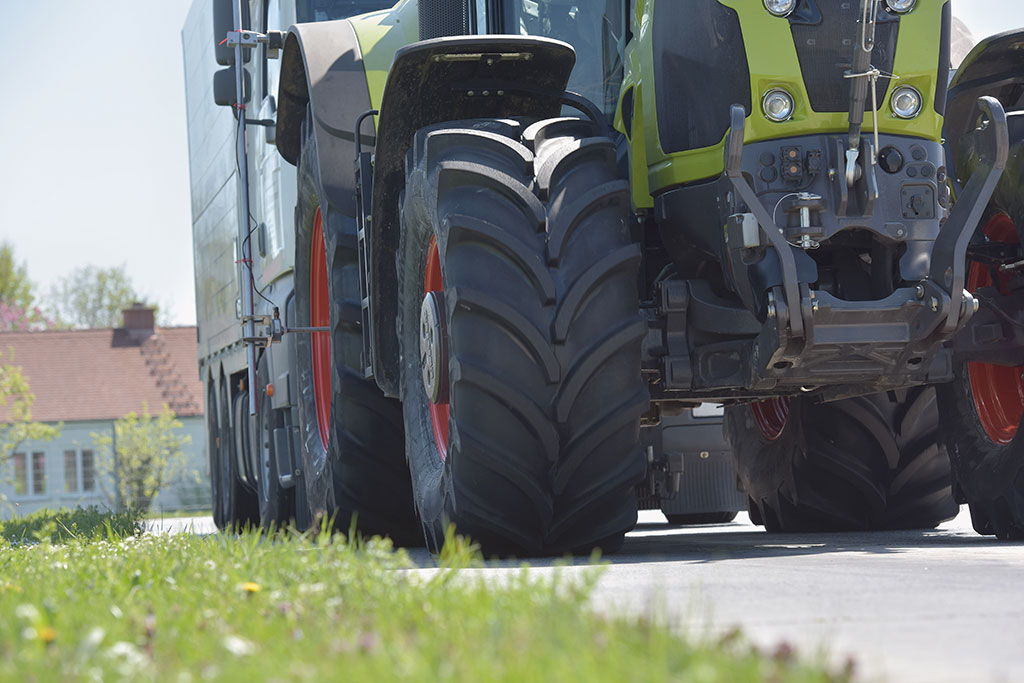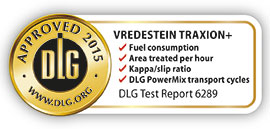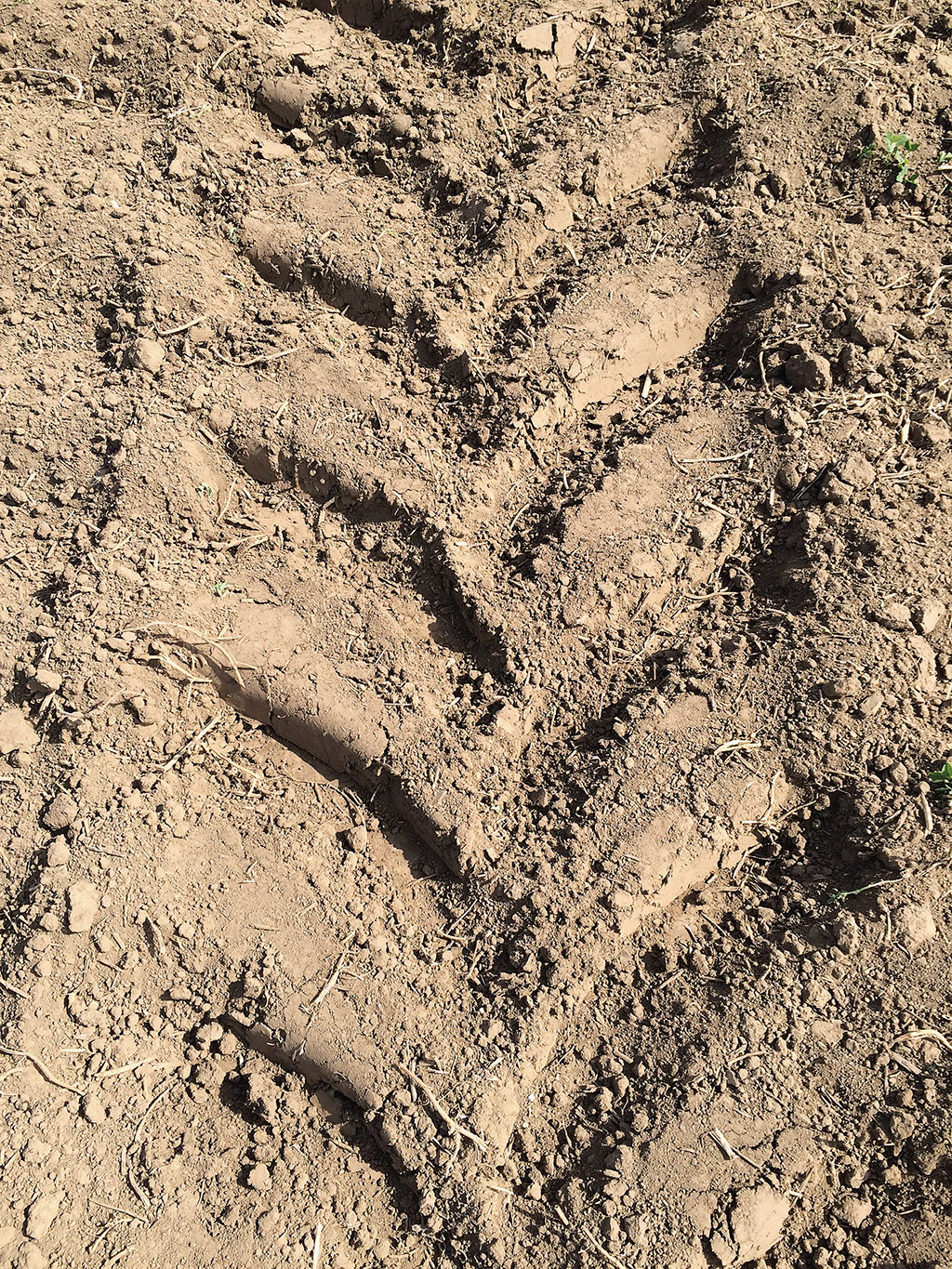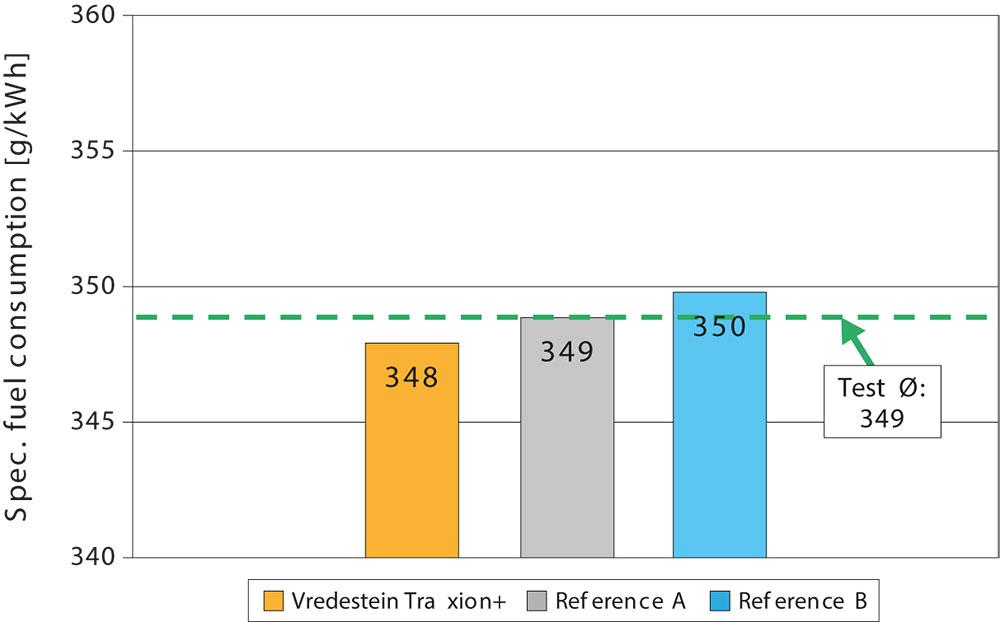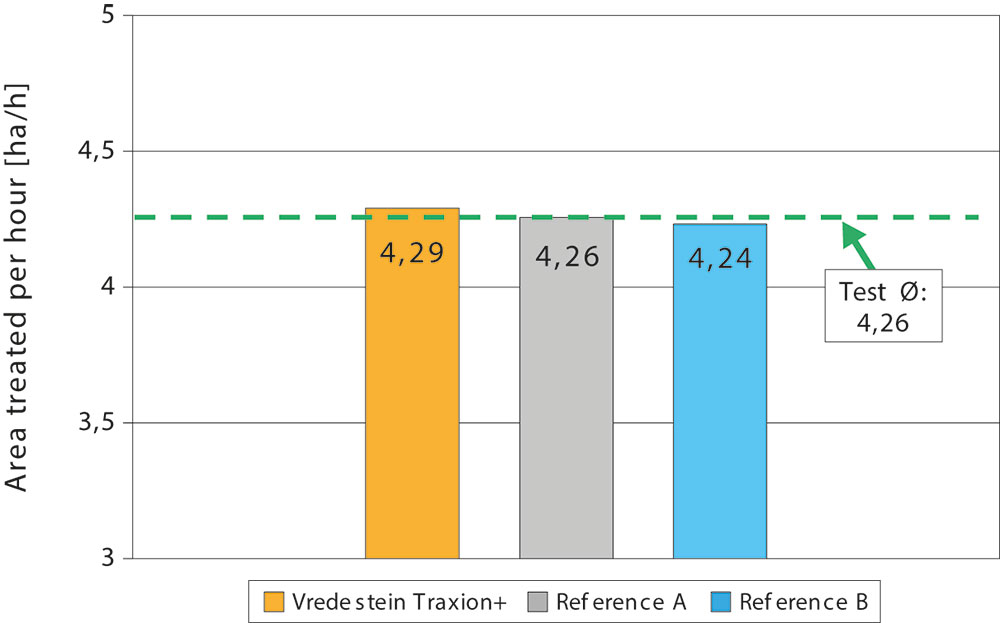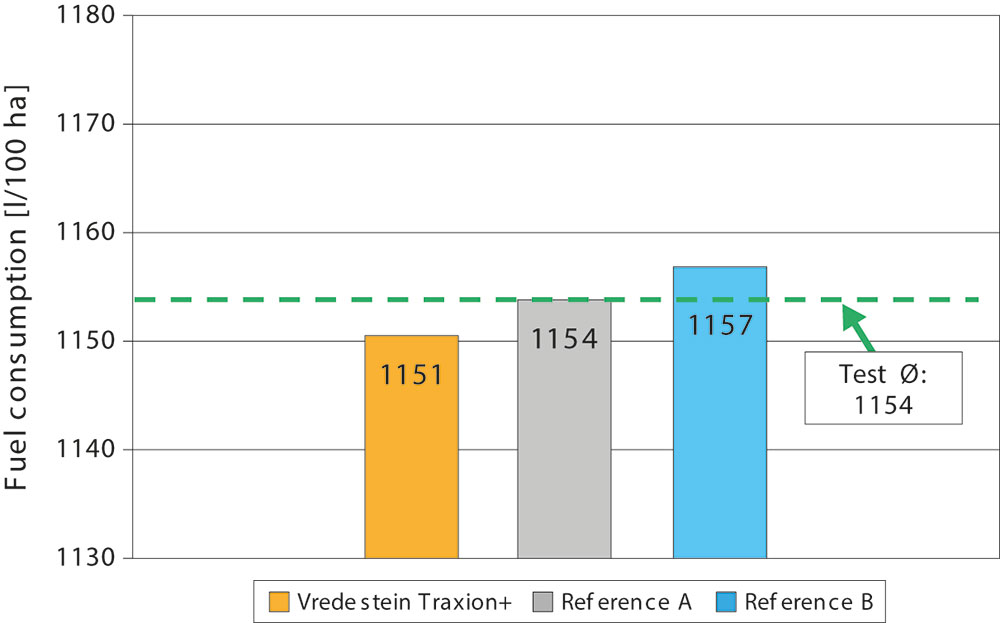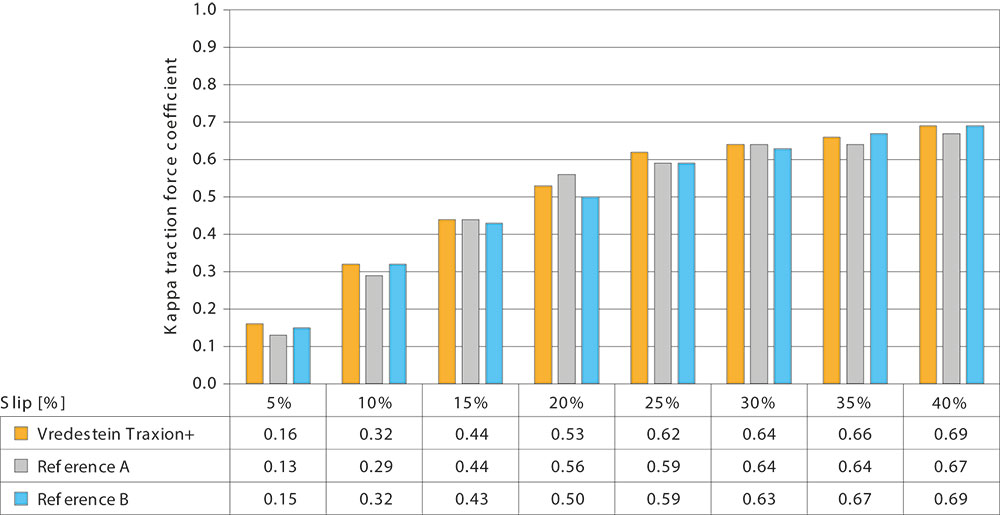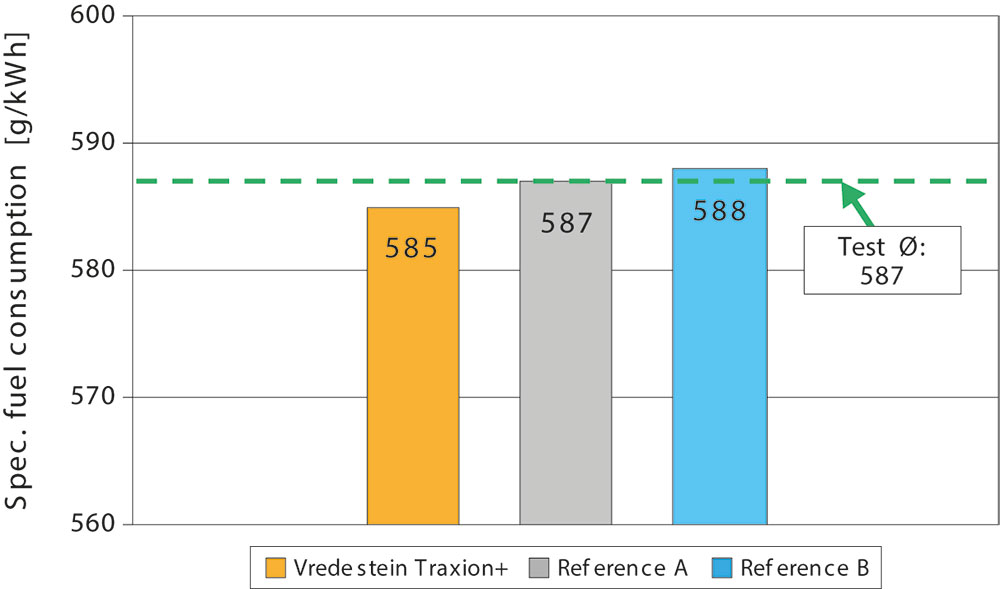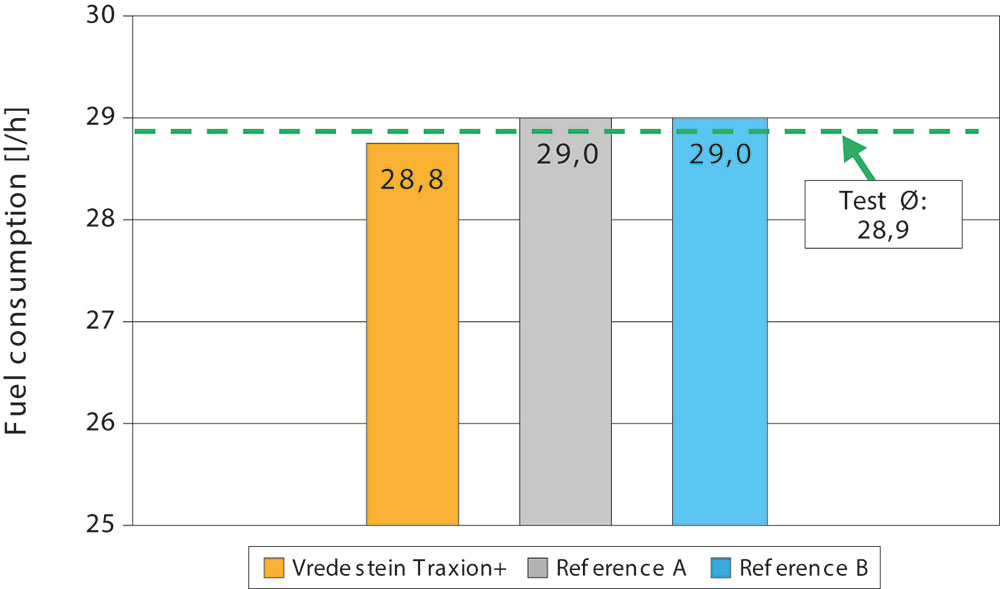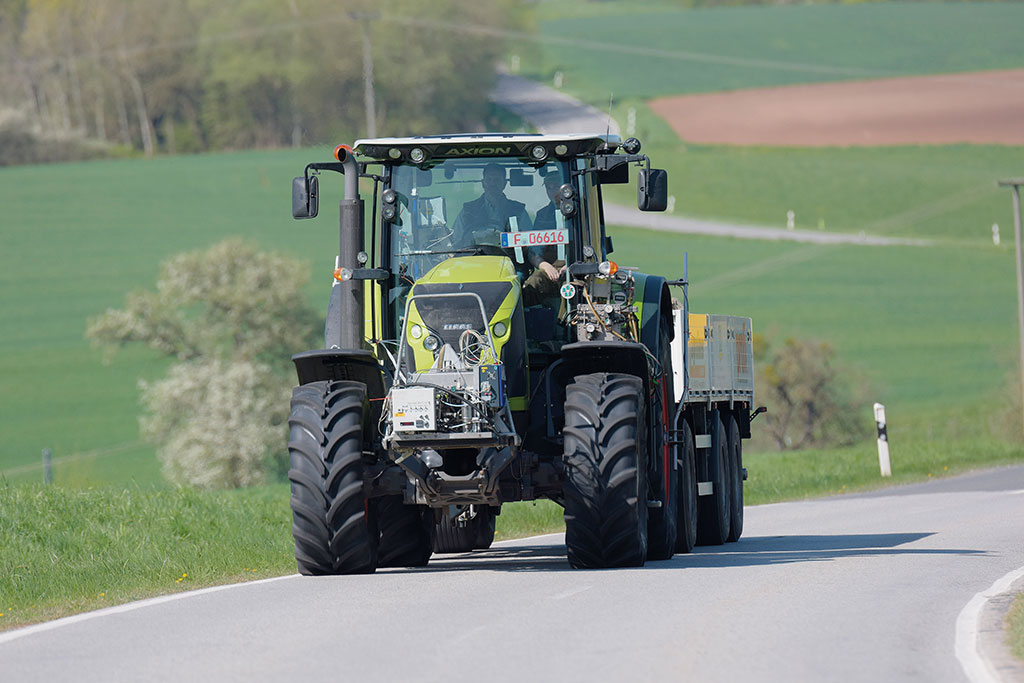Vredestein Agricultural tyres for tractors
DLG-APPROVED: Efficiency analysis in everyday routine
A „DLG Approved for single criteria“ test mark is awarded to agricultural engineering products, which have successfully passed a DLG smaller-scope usability test based on independent, recognised criteria. The tests serve to highlight particular innovations and key criteria in the test object. The test may include criteria from the DLG testing framework for overall tests or may focus on other determining features and properties of the test object. The minimum requirements, the test conditions and procedures and the assessment criteria for the test results are determined in agreement with a group of DLG experts. They equate to the accepted rules of engineering and scientific and agricultural expertise and requirements.A successful test concludes with the publication of a test report and the award of the test label, which is valid for five years from the date of award.
The test series, „Efficiency analysis for everyday routine“ includes investigations of the efficiency of tractor tyres in various operating conditions. Awarding consistent traction force values identifies the resulting speed during fieldwork and the fuel consumption. This was carried out in comparable ground and slip conditions and provides a statement, related to the specific fuel consumption at the power output delivered. Similarly the kappa/slip curve is determined for each tyre during fieldwork. This allows a statement to be made on the traction force transferred in the same slip as a function of the tractor weight. The well-known DLG transport test and the operating comfort at 40 km/h on flat sections round off the test programme. The measurements were carried out on the Vredestein Traxion+ tyre, from the major segment of the 65 standard tyre series in the current sizes: 540/65R30 on the front axle and 650/65R42 on the rear axle.
In order to classify the measurement results wheel combinations of the same sizes from two other wellknown European manufacturers of premium tyres were tested under the same conditions. For this purpose the air pressures of all the test candidates were regulated on the basis of the manufacturer-specified air pressure table and the wheel loads were determined prior to the test.
Assessment – Brief Summary
The Vredestein tyre passed the „kappa/slip ratio“ category on an equal footing with its competitors. In many areas it is even slightly in the lead at times and shows advantages in engine performance in forward drive.
In the next section of tests on specific fuel consumption under constant speed conditions the test candidate developed a slight lead under the given conditions. This, of course, has consequences for consumption and on the resulting efficiency. Depending on the size of the surface to be processed, an advantage becomes more or less clear here.
In the last test, the on road DLG PowerMix transport cycles with hill sections and flat sections related to the maximum speed of 40km/h, inherent in the design, the Vredestein tyre has slight advantages over its fellows where fuel consumption is concerned. Here also the extent of the overall saving across the total number of journeys made in routine operation becomes apparent. In considering the operating comfort related to driving on flat sections at 40 km/h, the Vredestein tyre is well positioned in the mid-range. It shows that in this test as well it is at parity with the reference candidates.
Table 1: Overview of results
| Test characteristic | Evaluation* |
| Fuel consumption | ◯ / + |
| Area treated per hour | ◯ / + |
| Kappa/slip ratio | ◯ / + |
| DLG PowerMix transport cycles | ◯ |
The Product
Vredestein Traxion+
Description and Technical Details:
Technical information and data are available on the manufacturer‘s home page.
The Method
The sets of tyres to be tested were first of all mounted on the test vehicle. Both for the tests in the transport test and for the tests on use during fieldwork a Claas Axion 850 C-Matic with continuously variable transmission was used. The load in use in fieldwork was simulated by means of a braking tractor, here a Claas Axion 930 C-Matic, also with continuously variable transmission.
Since all the units under test were new sets of tyres these were run in prior to the start of the test using a uniform procedure with particular respect to the transport test on the road. This guaranteed equality in the surface area of the tread lugs for all the tyres.
For the field test the two tractors were connected by a steel cable with integrated traction load cell. In addition, a Peiseler wheel was attached to the drawbar of the towing tractor. This provided the actual driving speed across the ground during the test. The wheel slip was determined from the measurement of the towing tractor‘s wheel speed and the rolling circumference of the tested tyres. The fuel consumption was recorded using a volumetric measurement system on the towing vehicle. The test procedure was identical for each tyre set.
In the first sub-test, the fuel consumption was determined with a constant speed setting on the towing vehicle‘s cruise control, as well as a constant traction load from the braking vehicle. This was based on load data measured on a cultivator during standard stubble cultivation in the field.
In the second sub-test, the aim was to determine the maximum traction under real slip conditions with the prevailing ground conditions at the test location. For this purpose a constant speed was set on the towing vehicle and the traction requirement was continuously increased via the braking vehicle up to a wheel slip of 40 %.
With respect to moisture, the prevailing ground conditions at the time of the test were recorded by random sampling over the whole test field.
The fuel consumption efficiency of the test tyres on the road was determined with the well-known system for the DLG PowerMix transport cycles. For this purpose, the tractor‘s specific fuel consumption was determined for the journey over 36 km on a defined circuit on six measuring segments with varying slope emission factors. Here, the tensile load of the machine was produced by a loaded trailer, which was connected to the test tractor via a tensile force gauge. Apart from the unladen weight of the test tyres, the masses for the test remained equal both for the tractor and for the trailer. The second part of the DLG PowerMix transport cycle delivers a statement on the energy efficiency during travel on flat sections at a maximum speed of 40 km/h. Because of the low traction requirement of the trailer flat sections, the rolling friction of the tyres is clearly noticeable.
The last test criterion determined the vibration behaviour of the test tyres based on the transport cycle on flat sections. In this test only the driving comfort at a constant speed of 40 km/h was assessed. In order to get an impression of the damping behaviour of the tyres, accelerometers were attached centrally to the front axle beam and to the transmission housing on the rear axle, in order to determine the vertical components of acceleration. For the purposes of measurement, a defined measurement section was driven at constant speed and the acceleration data were recorded. In order to determine the deflections due to external stimuli, different pronounced bumps were distributed along the road. In order to be able subsequently to assess the acceleration distribution using a frequency analysis, the natural vibration of each test candidate was calculated.
The larger the percentage ratio of vibrations occurring in the area of natural vibration, the better able is the tyre to cope with stimuli in the given boundary conditions. In order to exclude from this test the influence of radial run-out based on the tyre mounting on the wheel rim, each tyre was matched to the wheel rim and the total radial run-out subsequently checked.
In order to ensure statistical validity, all the measurements carried out in connection with this test, both in the field and on the road, were repeated at least three times.
Table 2: Test details
| Vredestein | Referenz A | Referenz B | ||||
|---|---|---|---|---|---|---|
| FA | RA | FA | RA | FA | RA | |
| Test combination | Traxion+ | Traxion+ | ||||
| Size | 540/65 R30 | 650/65 R42 | 540/65 R30 | 650/65 R42 | 540/65 R30 | 650/65 R42 |
| Load index | 143D | 158D | 143D | 158D | 143D | 158D |
| Average tread depth across tyre width [mm] | 51 | 58 | 52 | 61 | 58 | 65 |
| Number of tread lugs | 19 | 21 | 20 | 21 | 21 | 22 |
| Axle load test vehicle field [kg] | 5650 | 6960 | 5600 | 6950 | 5630 | 6900 |
| Tyre pressure field according to manufacturer‘s table [bar] | 1,4 | 0,8 | 1,4 | 0,9 | 1,4 | 0,9 |
| Resulting max. stat. tyre load capacity [kg] | 2920 | 3520 | 2890 | 3495 | 2885 | 3495 |
| Offset at selected tyre air pressure [%] | 2,2 | 2,7 | 1,6 | |||
| Axle load test vehicle on road [kg] | 4900 | 5915 | 4910 | 5840 | 4910 | 5870 |
| Total weight trailer [kg] | 13300 | |||||
| Tyre air pressure transport cycles and comfort test [bar] | 1,6 | |||||
The Test Results in Detail
In the first sub-test the specific fuel consumptions shown in Figure 4 were measured with an approximately constant traction requirement of approx. 50kN. This shows that, according to the work done under the test conditions the fuel requirement for the Vredestein tyre was slightly better in comparison to the reference products.
Based on the boundary conditions for the reference attachments, which were taken as a basis for the tractor settings, in this case a cultivator with known working width and depth, the area in hectares worked per hour was calculated. The results are shown in Figure 5.
Here also the differences in specific fuel consumption are obvious. Thus, the Vredestein tyre carries out its work on the same area only just, but nonetheless approx. 1.2 % faster than the third placed candidate. The result was influence by the working speeds resulting from the differences in adjusted slip conditions.
Based on the area treated per hour a comparison of the absolute fuel consumption and the fuel consumption related to a cultivated area can be undertaken. The overall result is reflected here with a slight advantage for the Vredestein tyre. Of course, in this case an economic added value is achieved only over a corresponding area or long-term observation. The results are shown in Figure 6.
The measurements of the kappa/slip ratio were made to calculate the transferable traction force as a function of slip and in relation to the total tractor weight used. This relation is shown by the kappa traction force coefficient without unit. The maximum efficiency factor would be reached when kappa = 1.
To provide a better and more detailed overview the results in Figure 7 have been shown in scaled format. For comparison it also shows which efficiency factor is apparent in defined slip conditions.
Because of this correlation between working speed and driving speed there is here also a direct correlation to area treated per hour and thus also to fuel consumption efficiency. In overall observation and under the given conditions the Traxion+ comes off better by a slight head than its competitors. In individual areas it even triumphs with the best traction force output. The transport cycles of the DLG PowerMix test are characterised by the fact that specific fuel consumption is calculated during a combination of journeys in the full load range on hill sections and also on journeys in the partial-load range on flat sections and at standstill (traffic lights).
The overall result includes a weighting of these three components during a journey, related to a distance of 10 km with a loaded trailer. The loading here was the same for all sets of tyres. Scaling was based on the maximum PTO shaft output before the test was begun. At 40 km/h the maximum speed on flat sections was above the cruise control settings of the tractor.
The results shown in Figure 8 in this area also show a slight advantage in specific fuel consumption for the Vredestein tyre. In order to make the result a little clearer the resulting amount consumed is calculated in l/h in Figure 9. This also shows clearly that the test candidate is well able to hold its own against the reference products. Observed over the long-term it even offers potential for greater fuel savings.
Figure 10 shows the results for the comfort measurements. In order to give these a relevance to the whole test programme and also to routine use, emphasis was put on the damping behaviour of the tyres during the transport cycle on flat sections at 40 km/h. The results show that here also the Vredestein tyre achieves a level in the range of the reference products. With its 96 % natural vibration ratio it lies very close to the average.
Summary
During the simulated towing activities the tested Vredestein Traxion+ tyre combination in size 540/65R30 on the front axle and 650/65R42 on the rear axle, when observed overall, is able to gain up to 40 % slip ratio, a slight advantage over its competitors. In examination of the individual values it even comes off best to some extent. This of course has an impact on the measurements of the specific fuel con-
sumption. The differences lie in the range from 2 g/kWh under the given conditions, with a tendency, however, to potential savings due to the slightly higher efficiency of the Traxion+. With respect to the area treated per hour and the absolute fuel consumption only small differences can be identified. If the results are examined closely with relation to the average values achieved for all the test candidates, it can be seen that investment in the Traxion+ will pay dividends over a relatively long period of application. Behaviour on the road also shows that the Vredestein tyre in the tested combination has clearly gained a place in the range of premium reference tyres.
Manufacturer and declarant
Apollo Vredestein B.V.
P.O. Box 27
7500 AA Enschede
The Netherlands
Kontakt:
www.apollovredestein.com
Test Execution
The DLG Test Center
for Technology and Farm Inputs,
Max-Eyth-Weg 1,
D-64823 Groß-Umstadt
Field
Automotive engineering
Project Manager
Dipl.-Ing. Andreas Ai
Test Engineer
Dipl.-Ing.(FH) Niels Conradi *
*Reporting Engineer
Contact
DLG TestService GmbH - Groß-Umstadt location • Max-Eyth-Weg 1 64823 Groß-Umstadt Germany • Tel.: +49(0)69 24 788-611 • tech@DLG.org

